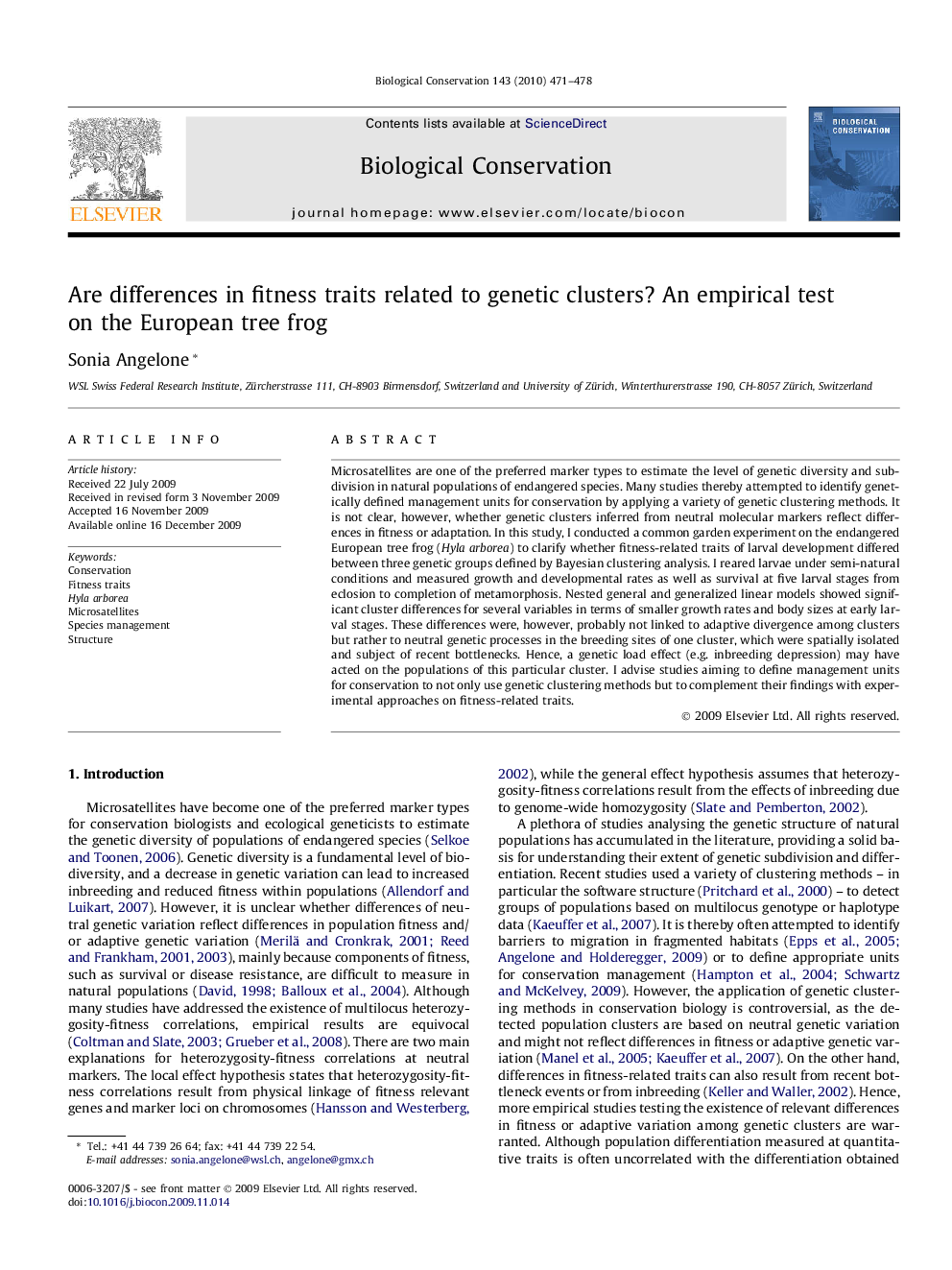| Article ID | Journal | Published Year | Pages | File Type |
|---|---|---|---|---|
| 4386519 | Biological Conservation | 2010 | 8 Pages |
Microsatellites are one of the preferred marker types to estimate the level of genetic diversity and subdivision in natural populations of endangered species. Many studies thereby attempted to identify genetically defined management units for conservation by applying a variety of genetic clustering methods. It is not clear, however, whether genetic clusters inferred from neutral molecular markers reflect differences in fitness or adaptation. In this study, I conducted a common garden experiment on the endangered European tree frog (Hyla arborea) to clarify whether fitness-related traits of larval development differed between three genetic groups defined by Bayesian clustering analysis. I reared larvae under semi-natural conditions and measured growth and developmental rates as well as survival at five larval stages from eclosion to completion of metamorphosis. Nested general and generalized linear models showed significant cluster differences for several variables in terms of smaller growth rates and body sizes at early larval stages. These differences were, however, probably not linked to adaptive divergence among clusters but rather to neutral genetic processes in the breeding sites of one cluster, which were spatially isolated and subject of recent bottlenecks. Hence, a genetic load effect (e.g. inbreeding depression) may have acted on the populations of this particular cluster. I advise studies aiming to define management units for conservation to not only use genetic clustering methods but to complement their findings with experimental approaches on fitness-related traits.
